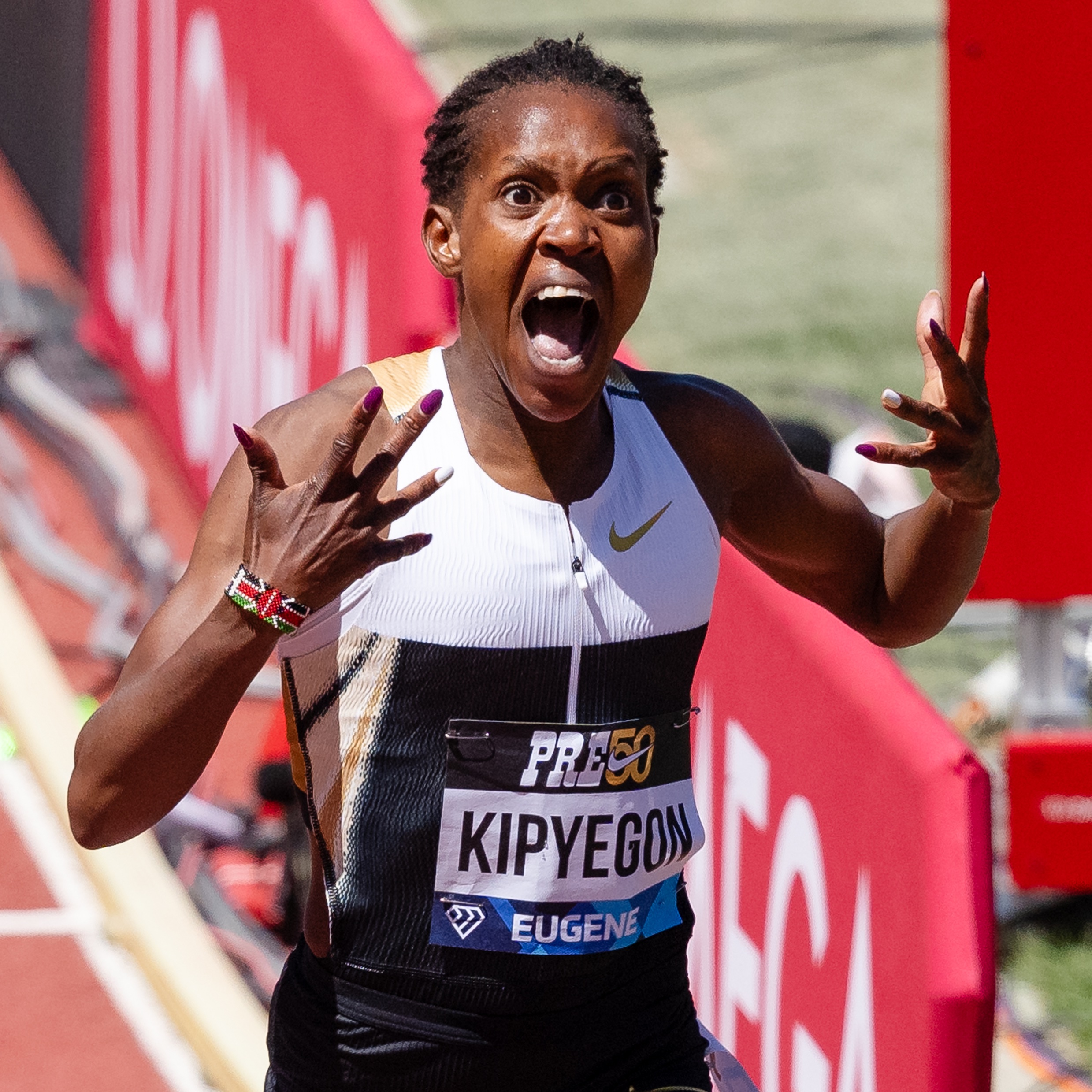
Sports science and management expert Kipchumba Byron believes Nike missed the mark with the pacing strategy during Faith Kipyegon’s ambitious Breaking4 Mile attempt on June 26 in Paris.
Dubbed “Breaking 4”, the high-stakes event was more than just a race; it was a calculated, high-tech assault on one of middle-distance running’s most formidable barriers.
Kipyegon, the current world record holder in the Mile at 4:07.64, set in Monaco in 2023, stepped onto the track at Charlety Stadium aiming to transcend the psychological and physiological barriers of the discipline. But the historic effort fell just short after she clocked 4:06.42.
Kipchumba argues that while including the pacers was a good move, the formation they chose may have worked against them. “The pacers looked more like hindrances than support systems. The main aim of the pacers was to prevent the wind from obstructing Kipyegon," Kipchumba said.
“They were in a linear formation that created a wind tunnel effect. Kipyegon was caught in a vacuum, which may have slowed her down."
Thirteen elite pacemakers, including double Olympic bronze medallist Grant Fisher, flanked Kipyegon in a carefully choreographed effort. Five pacers led from the front, Fisher ran shoulder-to-shoulder, and others formed a rear cocoon to reduce drag.
Among them were two females: British bronze medallist Georgia Bell and Australian star Jessica Hull, both dropped off after two laps. Kipchumba noted that the organisers should have chosen a better formation for the pacers, as they did with Eliud Kipchoge's INEOS 1:59 challenge.
"In contrast, the V-shaped formation used during Kipchoge’s INEOS 1:59 Challenge offered better aerodynamics," Kipchumba added. Kipchoge had a team of 41 pacemakers for the INEOS 1:59 in 2019.
They ran in a V-formation, rotating in and out to maintain a consistent pace for Kipchoge, who ran behind them. This formation was designed to minimise wind resistance and help Kipchoge achieve his sub-two-hour marathon goal. He also cited psychological pressure as a possible hurdle.
“Maybe the expectations weighed heavily on her. The hype surrounding the event was immense, and that kind of pressure can subtly affect performance,” he said. Kipchumba also believes the pacing fell short of the target.
“To finish in 3:59, each lap needed to be under 60 seconds; they needed to push her to a 59.5 seconds for at least each lap. They didn’t quite hit those marks. Had the Pacers maintained a tighter tempo, we might be talking history today.”
“Kipyegon did well in terms of average speed; she was doing around 23.5-24.3 km/hr. If she had done 25km/hr in the last lap, then she would have been well under four minutes,” he added. He further highlighted that more female pacers would have been included.
"We only had two female pacers at the Breaking4. But, understandably, Kipyegon is already the greatest middle distance runner alive, so no other female would have matched up to her tempo, hence they resorted to having male pacers."
Kipyegon wore a specially engineered Nike Fly Suit designed to minimise air resistance, paired with custom-built racing spikes inspired by her trusted Zoom Victory 2s. The plan was precise with projected splits of 60.4 (400m), 60.2 (800m), 59.6 (1,200m), and a blistering 58.4 final lap, enough to cut the tape in 3:59. But it wasn’t to be.
Despite a promising start, clocking 60.20 for 400m and 60.55 at 800m, her rhythm faltered slightly, finishing in 4:06.42 after slowing to 61.09 at 1,200m and 63.08 in the last lap.
Despite missing the mark, Kipchumba is confident that the 31-year-old has what it takes to go sub-four. “She lives to fight another day, and I am confident that she will be the one to break that sub-four mark. After the World Championships, she might do it in a natural race like the Diamond League without even pace makers. She has what it takes to do it.”
He reckons the sub-four dream was delayed, not denied. He believes that having a strong support system from the likes of Kipchoge and her coach Patrick Sang is cruicial as she plans to attack the sub four again.
"Kipyegon has a strong support system from the likes of Sang and Kipchoge, who attempted to break two hours in the Marathon once and fell short. I am sure he will give her proper advice."
"What I am confident in is that we will see a dominant Faith at the World Championships; she will want to extend her dominance in the 1,500m to show she is still the queen of the middle distance despite the Paris setback."
The women’s progression in the Mile has been a story of steady conquest.
Britain’s Ruth Christmas was the first to crack the six-minute barrier in 1932 with 5:27.5.
Two decades later, Diane Leather stunned the world by becoming the first woman under five minutes, clocking 4:59.6 in Birmingham 1954.
In 1996, Russia’s Svetlana Masterkova became the first woman to dip below 4:15 with a 4:12.56 in Zurich.
That effort stood for 23 years before it was bettered in 2019 when Dutch star Sifan Hassan edged it to 4:12.33.
But it was Kipyegon’s 4:07.64 in 2023 that truly signaled the arrival of a new era and sparked Nike’s push for the unthinkable.
Had she succeeded in her attempt in Paris, Kipyegon would have joined an exclusive club dominated by men like Hicham El Guerrouj, the Moroccan who still holds the men’s world record at 3:43.13 since 1999.











